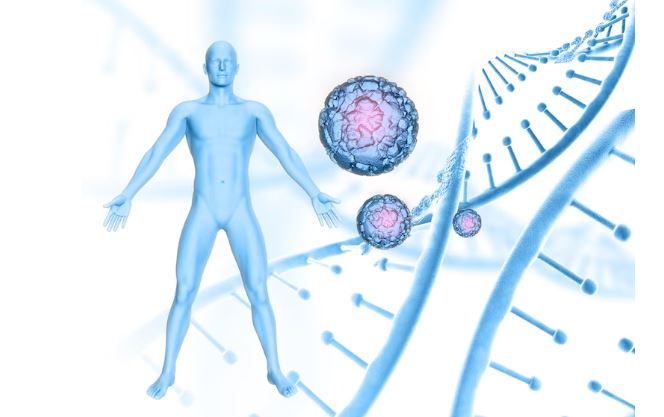The cell membrane is a crucial component of every cell, as it acts as a barrier that separates the cell’s interior from its external environment. It is made up of a double layer of phospholipids that form a lipid bilayer, which is interspersed with various proteins and other molecules. One of the molecules that can be found in the cell membrane is cholesterol, which plays several important roles in maintaining the structure and function of the membrane. In this article, we will explore what cholesterol does in the cell membrane, how it affects membrane fluidity, and its implications for overall cellular health.
The cell membrane is a complex structure that is essential for maintaining the integrity and functionality of cells. It is made up of a lipid bilayer, which consists of two layers of phospholipids that are arranged tail-to-tail. This lipid bilayer is interspersed with various proteins and other molecules, including cholesterol. Cholesterol is a lipid molecule that is important for many cellular processes, including the structure and function of the cell membrane. In this article, we will explore the role of cholesterol in the cell membrane, its effects on membrane fluidity, and its implications for overall cellular health.
2. What is Cholesterol?
Cholesterol is a lipid molecule that is found in all animal cells. It is a sterol, which means that it has a rigid structure with four carbon rings. Cholesterol is synthesized by the liver and other tissues, and it can also be obtained from the diet. It is important for many physiological processes, including the production of hormones, the synthesis of vitamin D, and the digestion of fats.
3. Structure of the Cell Membrane
The cell membrane is composed of a lipid bilayer that is made up of two layers of phospholipids. Phospholipids have a hydrophilic (water-loving) head and a hydrophobic (water-fearing) tail. In the lipid bilayer, the hydrophilic heads face outward towards the aqueous extracellular and intracellular environments, while the hydrophobic tails face inward and interact with each other. This creates a hydrophobic barrier that separates the cell’s interior from its external environment.
4. Role of Cholesterol in the Cell Membrane
Cholesterol plays several important roles in maintaining the structure and function of the cell membrane. Some of these roles include:
Maintaining Membrane Fluidity
Cholesterol helps to maintain the fluidity of the cell membrane. The phospholipids in the lipid bilayer are able to move around and rotate, which allows the membrane to remain fluid and flexible. However, if the membrane becomes too fluid, it can become unstable and leaky. Cholesterol helps to prevent this by interacting with the hydrophobic tails of the phospholipids and making the membrane less fluid. This helps to maintain the stability and integrity of the cell membrane.
Regulating Membrane Permeability
Cholesterol also helps to regulate the permeability of the cell membrane. The lipid bilayer is selectively permeable, which means that it allows certain molecules to pass through while preventing others from doing so. Cholesterol can affect the permeability of the membrane by altering the packing of the phospholipids. This can affect the size and shape of the channels and pores in the membrane, which can influence the movement of molecules across the membrane.
Supporting Membrane Proteins
Cholesterol also plays a role in supporting membrane proteins. Membrane proteins are embedded in the lipid bilayer, and they perform a variety of functions, including transporting molecules across the membrane, transmitting signals between cells, and providing structural support. Cholesterol interacts with these membrane proteins and can help to stabilize their structure, which is important for their proper function.
Modulating Signaling Pathways
Cholesterol can also modulate signaling pathways that are activated by extracellular ligands. When a ligand binds to a receptor on the cell surface, it can activate a signaling pathway that leads to changes in gene expression and other cellular processes. Cholesterol can affect these pathways by interacting with the receptors and modulating their activity. This can have important implications for cell signaling and communication.
5. Implications for Cellular Health
Cholesterol plays an important role in maintaining the structure and function of the cell membrane, and its levels are tightly regulated by the body. However, imbalances in cholesterol levels can have negative effects on cellular health.
Cholesterol Imbalances and Disease
High levels of cholesterol in the blood can lead to the formation of plaques in the arteries, which can increase the risk of heart disease and stroke. Low levels of cholesterol can also have negative effects on cellular health, as cholesterol is important for many physiological processes, including the synthesis of hormones and the maintenance of the cell membrane.
Targeting Cholesterol in Therapy
Because of its important role in cellular health, cholesterol is a target for therapy in a variety of diseases. For example, statins are a class of medicine that are used to lower cholesterol levels in patients with high cholesterol. Other medicine that target cholesterol include cholesterol absorption inhibitors, which reduce the amount of cholesterol absorbed from the diet, and PCSK9 inhibitors, which reduce the amount of LDL (or “bad”) cholesterol in the blood.
6. Conclusion
In conclusion, cholesterol plays several important roles in maintaining the structure and function of the cell membrane. It helps to maintain membrane fluidity, regulates membrane permeability, supports membrane proteins, and modulates signaling pathways. Imbalances in cholesterol levels can have negative effects on cellular health, and cholesterol is a target for therapy in a variety of diseases.
